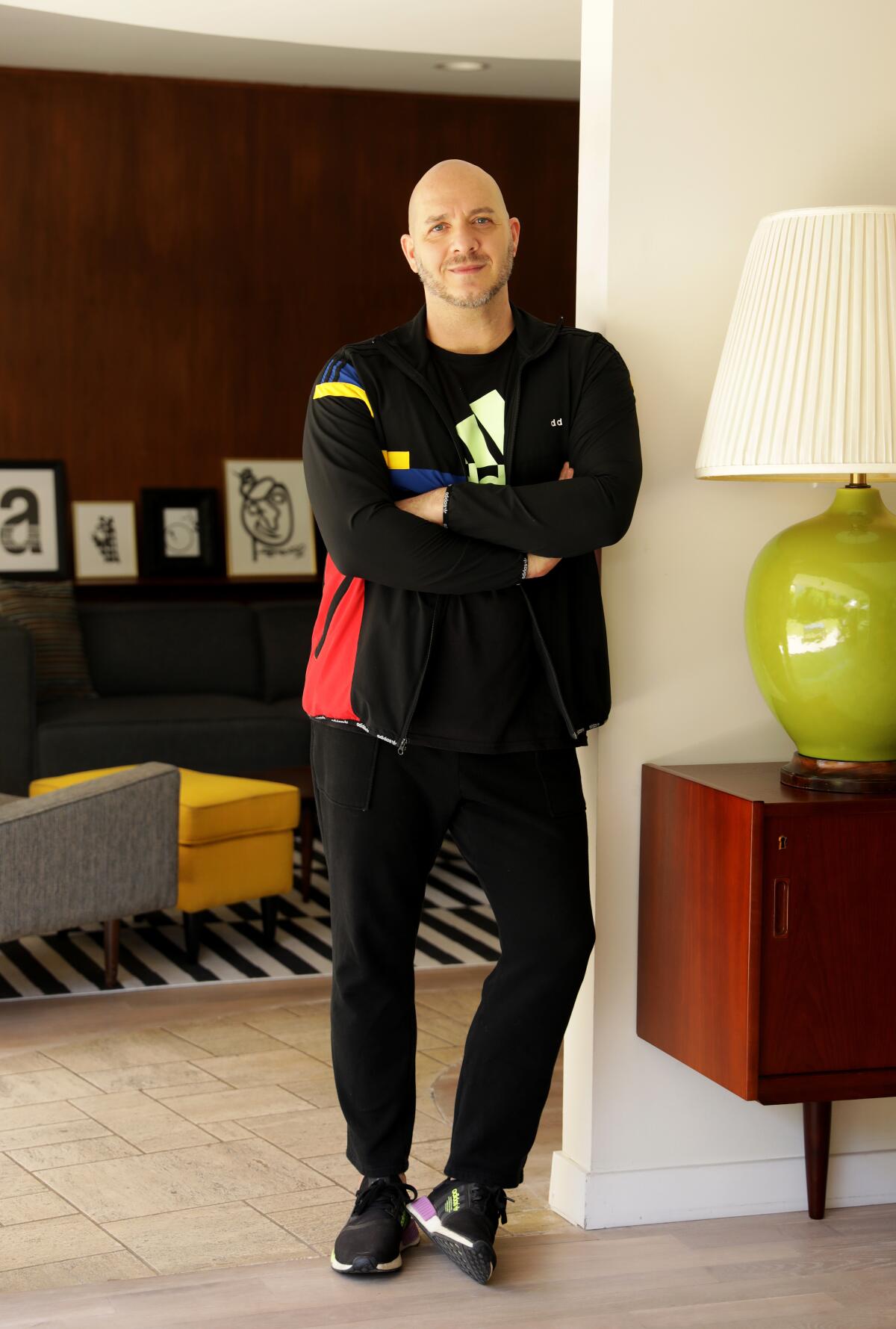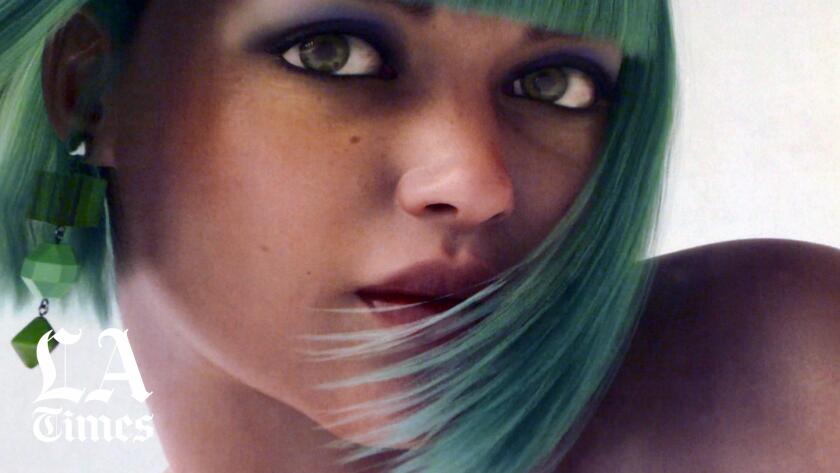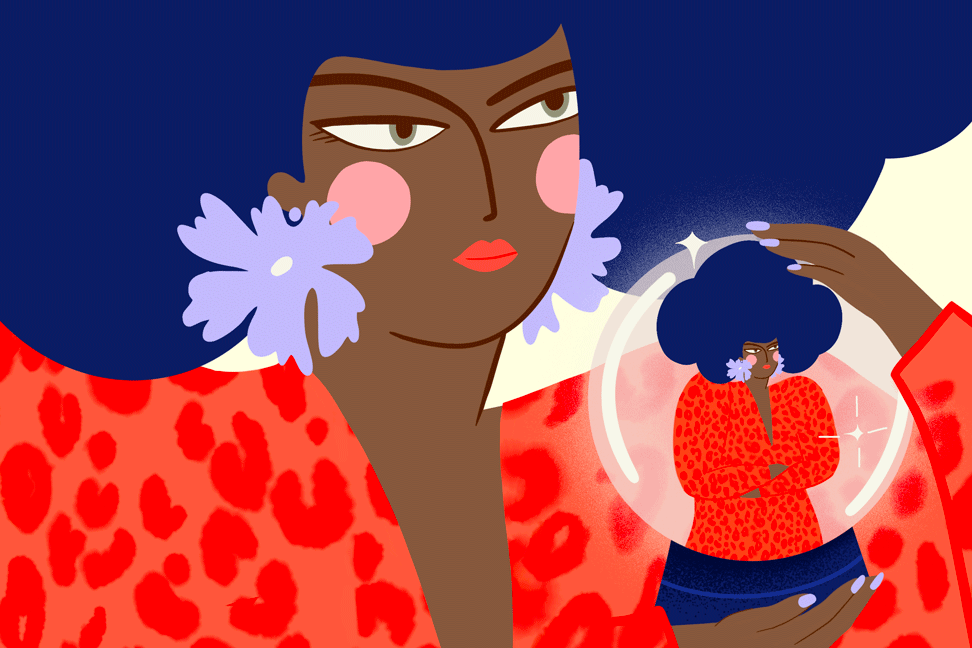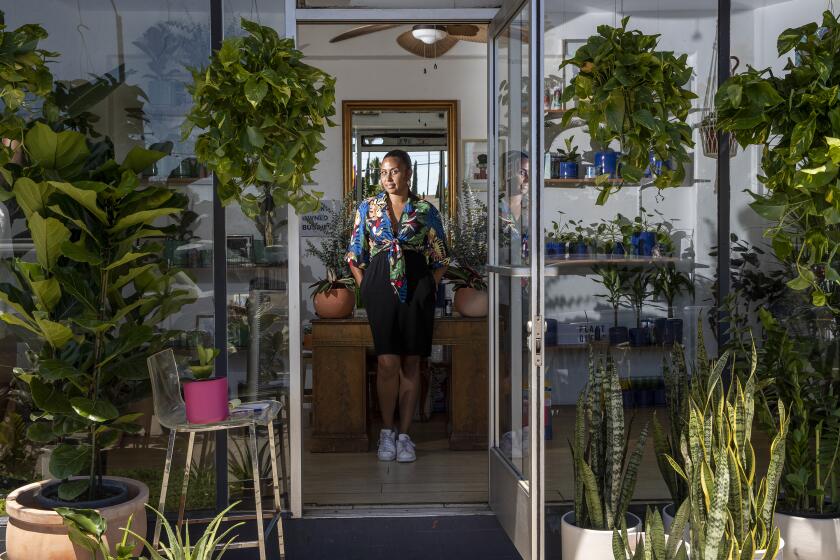Is this the end of the supermodel? Why the next Gigi, Kaia and Kendall will be digital
- Share via
Step aside Gigi Hadid, Kendall Jenner and Kaia Gerber. Mia, Jada and Bella Hueman are blazing a fresh path in the fashion industry.
Teenage Mia always strikes the perfect pose, aiming her gaze at the camera as her turquoise bob swings in the air. A few years older, Jada commands attention with her shaved head and makeup-free look. Bella designs flowing kimono-style jackets and elegant one-sleeved jumpsuits for her line called Unhueman. A video of her new sustainable collection is scheduled to premiere at Mercedes-Benz Fashion Week Russia as part of its Sept. 6 digital exhibition for young talent.
The up-and-comers could be called larger than life. That would be if they were real.
- Share via
Mia’s Instagram bio alerts fans that she’s a “nonhuman fashion model between fantasy and reality.” They’re all computer-generated 3-D models created by fashion designer Christian Guernelli, who also built the eight digital outfits that will be featured at Mercedes-Benz Fashion Week Russia.
“The fashion industry needs a revolution,” Guernelli said recently in the backyard of his Midcentury Modern home in Culver City.

With experience designing for Woolrich, John Varvatos, Eva Franco and other labels in his native Italy and the U.S., the 46-year-old asserts that mixing technology with fashion can transform a designer’s job.
“It’s kind of like you can see the same things around, and I think designers are never inspired anymore,” he said. “I don’t think this technology will be a substitute. Real-life models will keep going to work. We will see fashion shows again like a real fashion show. But I think this is an extra tool that can help designers create something new.”
Valentino, Burberry and other luxe labels play a supporting role in the fashion-packed visual album. Here’s a closer look at the outfits and fashion of “Black is King.”
Wearing a blue T-shirt, black shorts and knitted sneakers, Guernelli is soft-spoken with a low-key nature that contrasts with that of his slick models, who reveal one alternate version for fashion. Specifically, it’s a future freed from real-life problems such as COVID-19, travel restrictions and weak apparel sales.
“It’s a route that is practical,” said New York-based fashion historian Darnell-Jamal Lisby, “because it’s cheaper. It’s accessible, and it reaches a larger audience.”
He added that the technology could liberate the fashion industry from decades-old beauty and sizing standards that exclude certain people. “The CGI model in a way, to some degree, helps kind of amplify that message to making fashion a little more inclusive of more groups,” he said.
Jada, Mia and Bella are following in the footsteps of virtual influencers Shudu, Lil Miquela and Liam Nikuro, who despite their lack of corporeality, have partnered with Balmain, Ugg and the NBA’s Washington Wizards, respectively. Moreover, designer Anifa Mvuemba used an invisible 3-D avatar to model for her label Hanifa’s Instagram fashion show in May. Unlike Unhueman’s collection, Mvuemba’s designs are being manufactured to sell to real people.
As L.A. labels adapt, back-burnered projects and faraway trends come into focus — fast.
Guernelli began constructing his CGI coterie after reading an article in January about Shudu. He didn’t base his models on living people. Using Daz software, “I started to build through different experiments and found the face that I liked,” he said.
Several followers of Bella and Mia on Instagram also liked them. “Some people asked me if I am real. They told me, ‘You’re beautiful.’ I kind of worry; like people at some point will see I’m a bearded guy, bald,” he said, laughing.
For Unhueman’s virtual fashion, Guernelli started with the same process he has used to design actual clothes. He pinned images of prints and colors to an oversize corkboard in a small bedroom converted into a studio. He subscribed to a 3-D fashion design software called Clo. Frustrated with the 18 hours it took to render one model on his MacBook Pro, he shelled out $2,000 for a CyberPowerPC gaming computer with a special graphics card to trim the time by 80%. He downloaded the eerie soundtrack disrupted by desolate drums for his 2½-minute video from a royalty-free music site called Videvo.
Challenges in this virtual world abound. Saisangeeth Daswani, who oversees fashion and beauty projects for corporate clients at the London-based trend research firm Stylus, identified two of them. “One is that technical know-how and having that capability of doing [design] the same way so it looks like high fashion,” she said. “The second is figuring out how you can replicate that touch-and-feel aspect of things that is so important when you think about materials and movement.”
Following stay-at-home orders, Amorette Brooms pivoted her fashion business to houseplants.
Guernelli conceded that one can’t touch anything virtual. However, he said, “if you do a close-up, you can see really the texture of the fabric.”
Guernelli’s digital work looked convincing enough to have generated inquiries from three companies. The Paris-based creative agency RHK Studio also represents Bella, Mia and Jada for modeling jobs. Guernelli and his models haven’t booked a client yet.
“Brands say, ‘They’re pretty, but how can I work with them?’” Guernelli said. “My dream is to go do [a fashion shoot in] some Vogue pages.”
More to Read
Sign up for The Wild
We’ll help you find the best places to hike, bike and run, as well as the perfect silent spots for meditation and yoga.
You may occasionally receive promotional content from the Los Angeles Times.













